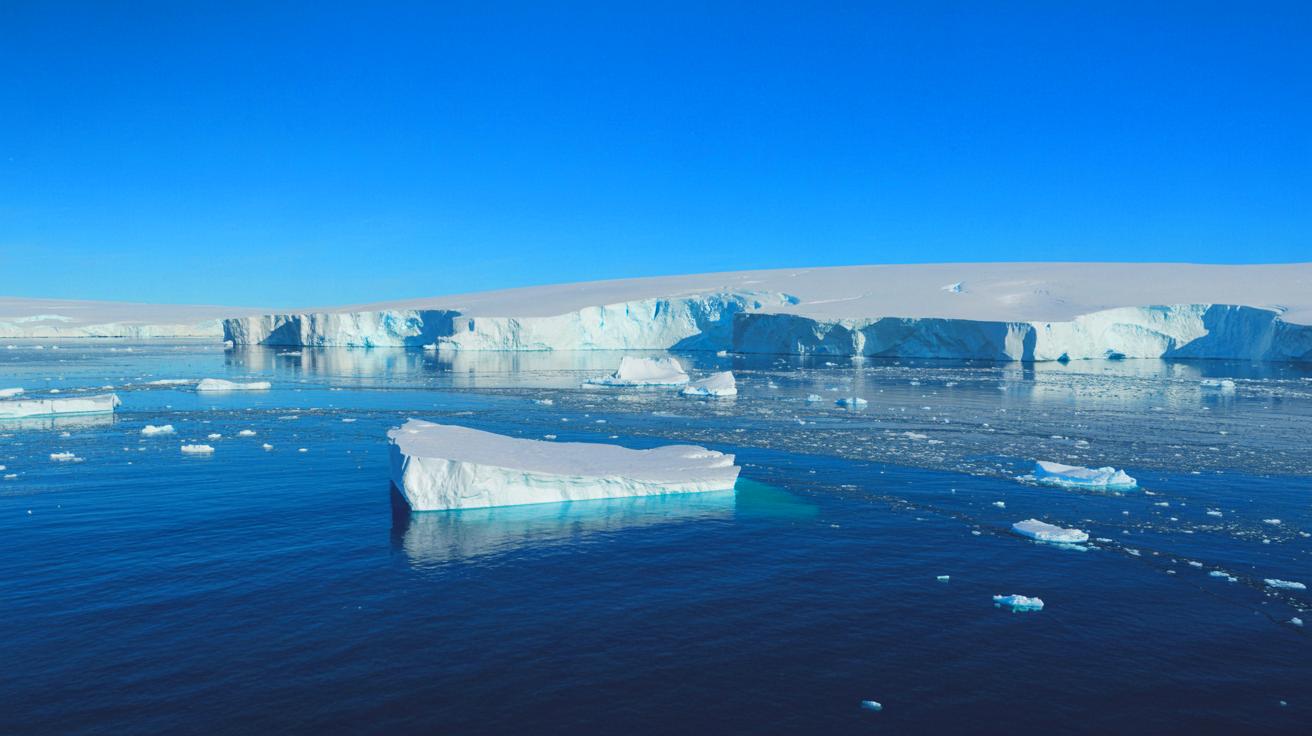IN A NUTSHELL
🌍 Antarctica’s sea ice hits third-lowest level in nearly 50 years, indicating climate change impacts.
📉 The 2025 maximum ranks behind 2023 and 2024, yet remains well below historic norms.
🧊 Sea ice retreat affects global climate by replacing reflective surfaces with heat-absorbing water.
🌡️ Global warming is now influencing Antarctic waters, posing long-term sea-level rise risks.
Antarctica’s winter sea ice has reached its third-lowest level in nearly half a century, signaling an alarming trend in the region’s climatic conditions. Researchers have observed a significant reduction in sea ice coverage, peaking at approximately 6.88 million square miles this September. This figure places 2025 just behind the record lows of 2023 and 2024. The data suggests a disturbing pattern, emphasizing the impact of global warming on the planet’s southern pole. As scientists continue to study these changes, the implications for global climate and sea levels remain a pressing concern.
Antarctica’s Shrinking Sea Ice: A Closer Look
Each year, during the Southern Hemisphere’s winter, the ocean surrounding Antarctica freezes, extending hundreds of miles beyond the continent’s boundary. Historically, the peak of this sea ice expansion occurs in September or October before the seasonal thaw begins. In 2025, the ice hit its peak on September 17, covering approximately 6.88 million square miles, according to the U.S. National Snow and Ice Data Center at the University of Colorado Boulder.
This year’s measurements rank as the third lowest since satellite monitoring began nearly 47 years ago. Only 2023 and 2024 recorded lower extents. This declining trend is starkly different from previous patterns. Up until 2016, Antarctic sea ice measurements displayed an erratic but slightly increasing trend. However, recent years have shown a significant decline, attributed to the mixing of warm global ocean currents with the waters closest to Antarctica.
Implications of Sea Ice Decline
The reduction of sea ice in Antarctica carries significant implications for the global climate system. While floating sea ice does not contribute directly to sea-level rise when it melts, its retreat has other profound effects. The loss of ice replaces bright, reflective surfaces with dark ocean water that absorbs more of the Sun’s energy, contributing to further warming.
Additionally, sea ice plays a crucial role as a stabilizing buffer for the Antarctic Ice Sheet, mitigating the impact of ocean waves and winds. Without this buffer, the ice sheet becomes more vulnerable to breaking apart and sliding into the ocean, contributing to rising sea levels. Senior research scientist Ted Scambos noted that while increased snowfall from humid ocean air could temporarily offset some effects, longer-term warming trends suggest a shrinking ice sheet.
Global Warming’s Influence on Antarctica
Ninety percent of the heat generated by human-caused global warming is absorbed by the oceans. This warming is now reaching the Antarctic waters, significantly affecting the region’s climatic stability. Scambos explained that the intrusion of warmer waters is a recent development, indicating that climate change is catching up to Antarctica.
While the immediate effects may not be catastrophic, the long-term implications are concerning. The Antarctic Ice Sheet contains enough ice to raise global sea levels significantly, threatening low-lying coastal areas worldwide. The current trajectory suggests that if warming continues, the ice sheet’s potential contribution to sea-level rise could be realized over centuries.
“We Spent $36,000 To Prove The Earth Is Round,” Flat Earther Admits Shockingly
The Future of Antarctic Sea Ice
As climate change continues to impact the Antarctic region, scientists are closely monitoring the changes in sea ice extent. The data from recent years underscores the urgency of understanding and addressing the broader implications of these trends. The interplay between ocean temperatures, sea ice, and the Antarctic Ice Sheet will be critical in shaping future sea-level scenarios.
Researchers emphasize the importance of continued observation and study to predict potential outcomes accurately. The changes in Antarctic sea ice are a clear indicator of the broader climate shifts affecting our planet. With the stakes so high, it remains crucial to consider what actions can be taken to mitigate further impacts.
The recent findings on Antarctic sea ice highlight the complex interplay between climate change and polar environments. As researchers strive to understand these dynamics, the question remains: how will global efforts to combat climate change influence the future stability of Antarctica’s ice sheets and, consequently, the world’s coastlines?
This article is based on verified sources and supported by editorial technologies.
Did you like it? 4.5/5 (25)

